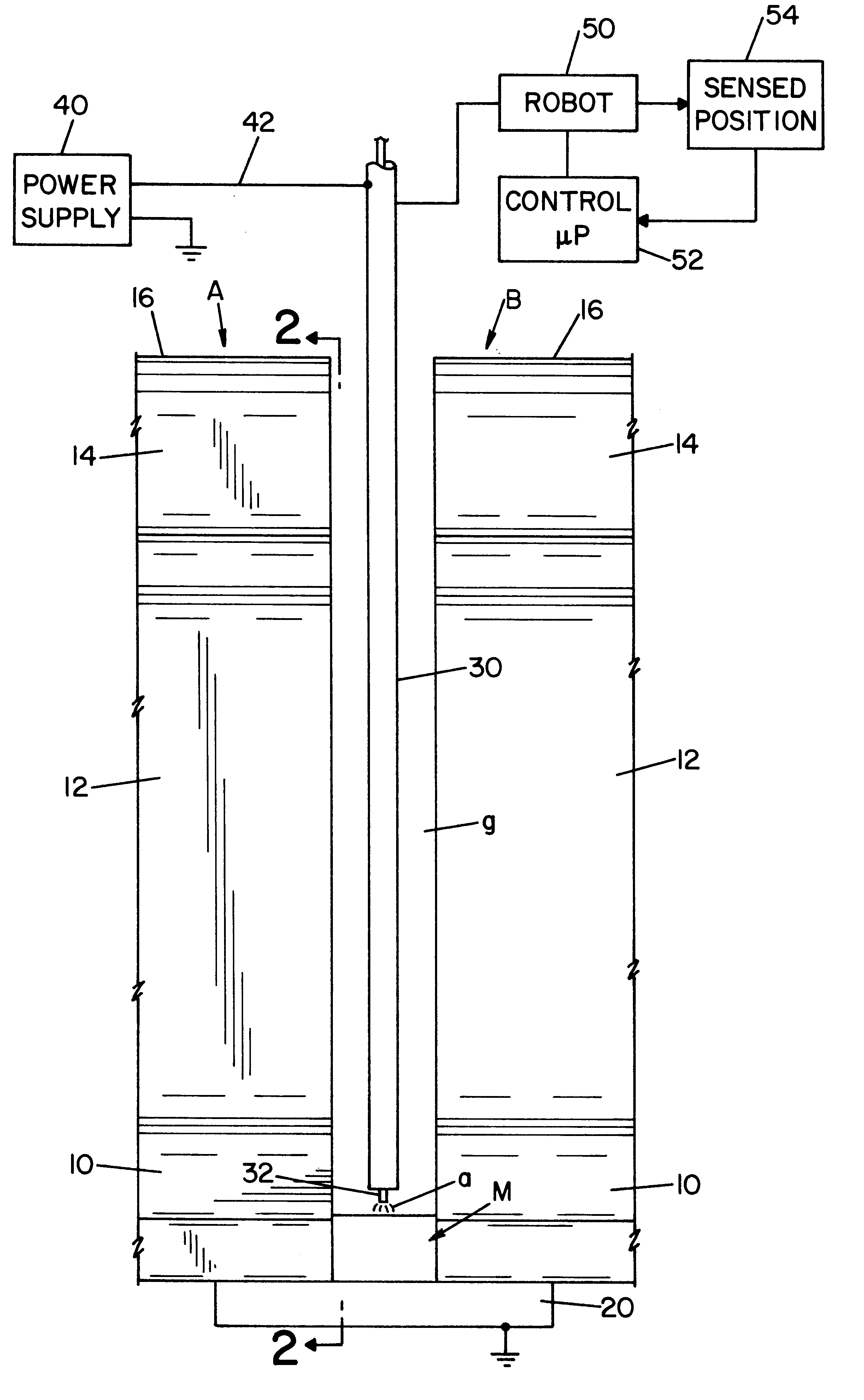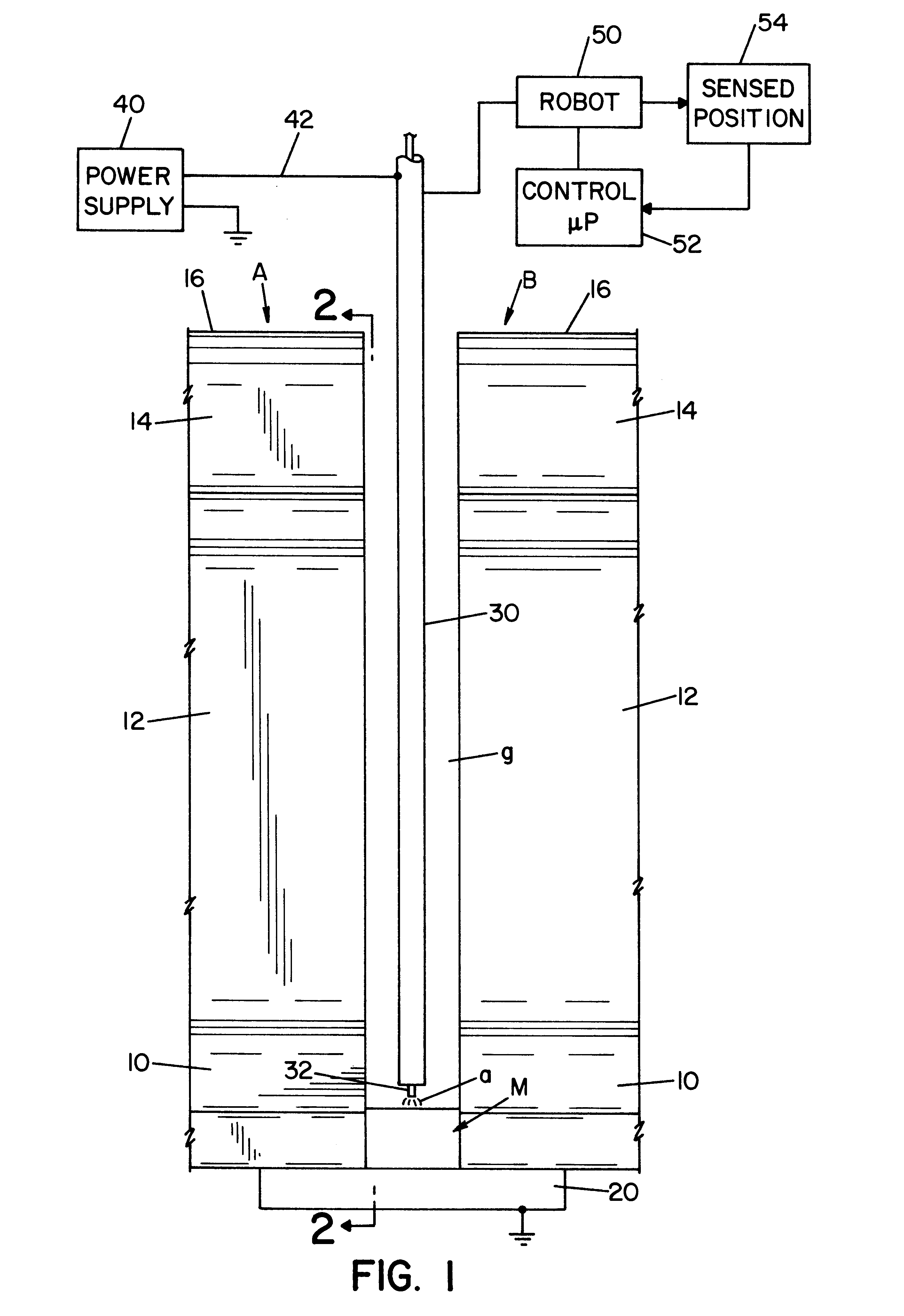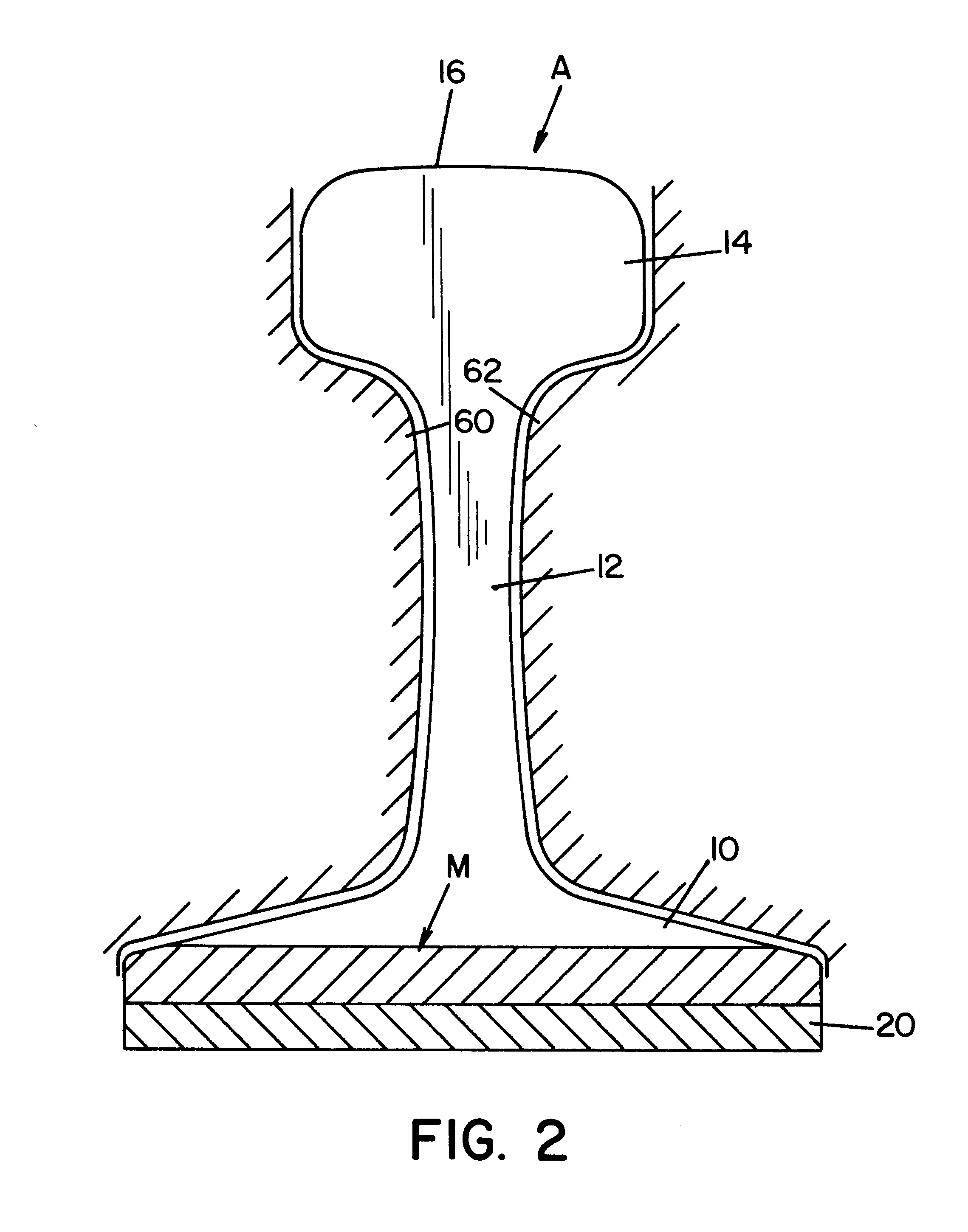Method and system for welding railroad rails
a technology for railroad rails and rails, applied in rail joints, manufacturing tools, ways, etc., can solve problems such as difficulty in using the program, uneven narrow gap between rails, and some unsuccessful welding procedures that require a substantial amount of operator attention
- Summary
- Abstract
- Description
- Claims
- Application Information
AI Technical Summary
Benefits of technology
Problems solved by technology
Method used
Image
Examples
Embodiment Construction
Referring now to the drawings wherein the showings are for the purpose of illustrating a preferred embodiment of the invention only, and not for the purpose of limiting same, FIGS. 1 and 2 show railroad rails A, B, each having a standard base 10, web 12, head 14, and upper cap 16. To create electrical continuity for the arc welding process, spaced rails A, B, are grounded together by backplate 20, which closes the lower portion of vertically extending gap g. This gap is filled by an electric arc welding process as described in Morlock U.S. Pat. No. 5,773,779 and Morlock U.S. Pat. No. 5,877,468 whereby molten metal M is deposited in gap g by a torch 30 through which is advanced a welding wire or electrode 32. A standard power supply 40 has a lead 42 electrically connected to torch 30 for creating the voltage between electrode 32 and the molten metal puddle or bead M. In accordance with standard welding technology, the voltage between electrode 32 and metal M causes an electric arc a,...
PUM
| Property | Measurement | Unit |
|---|---|---|
| Height | aaaaa | aaaaa |
Abstract
Description
Claims
Application Information
 Login to View More
Login to View More - R&D
- Intellectual Property
- Life Sciences
- Materials
- Tech Scout
- Unparalleled Data Quality
- Higher Quality Content
- 60% Fewer Hallucinations
Browse by: Latest US Patents, China's latest patents, Technical Efficacy Thesaurus, Application Domain, Technology Topic, Popular Technical Reports.
© 2025 PatSnap. All rights reserved.Legal|Privacy policy|Modern Slavery Act Transparency Statement|Sitemap|About US| Contact US: help@patsnap.com



